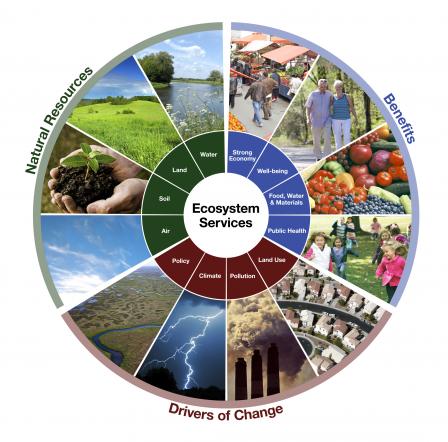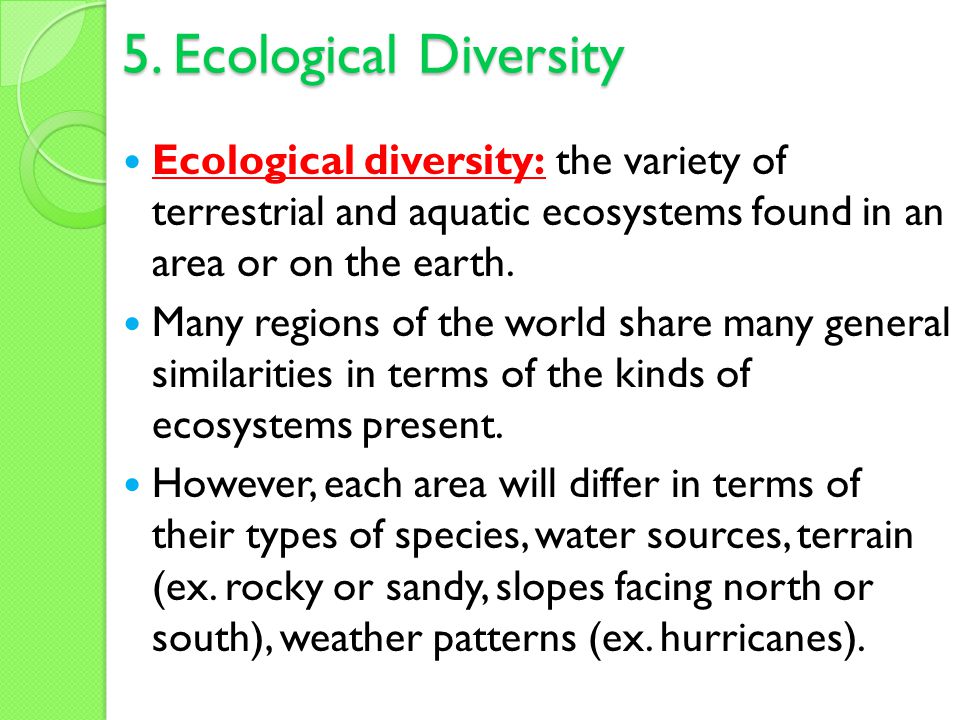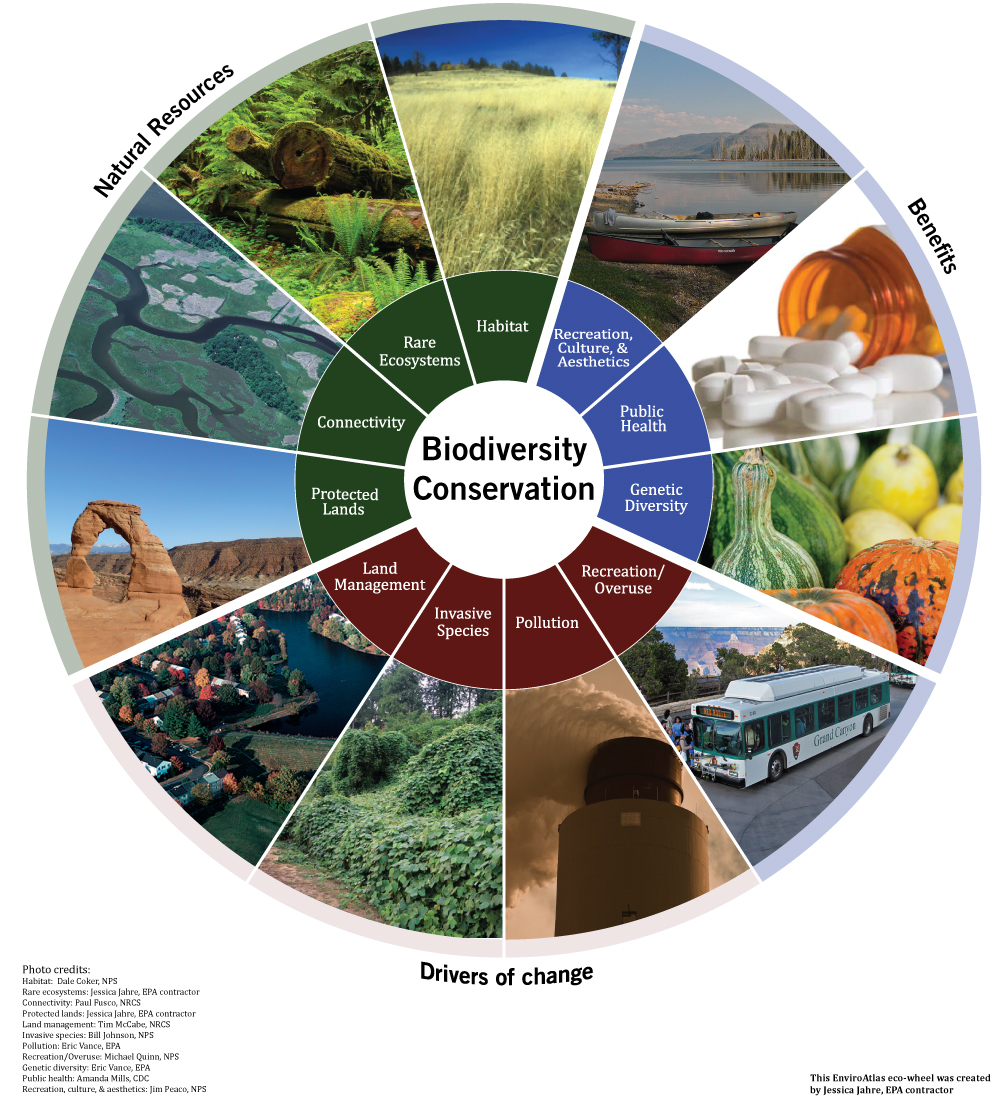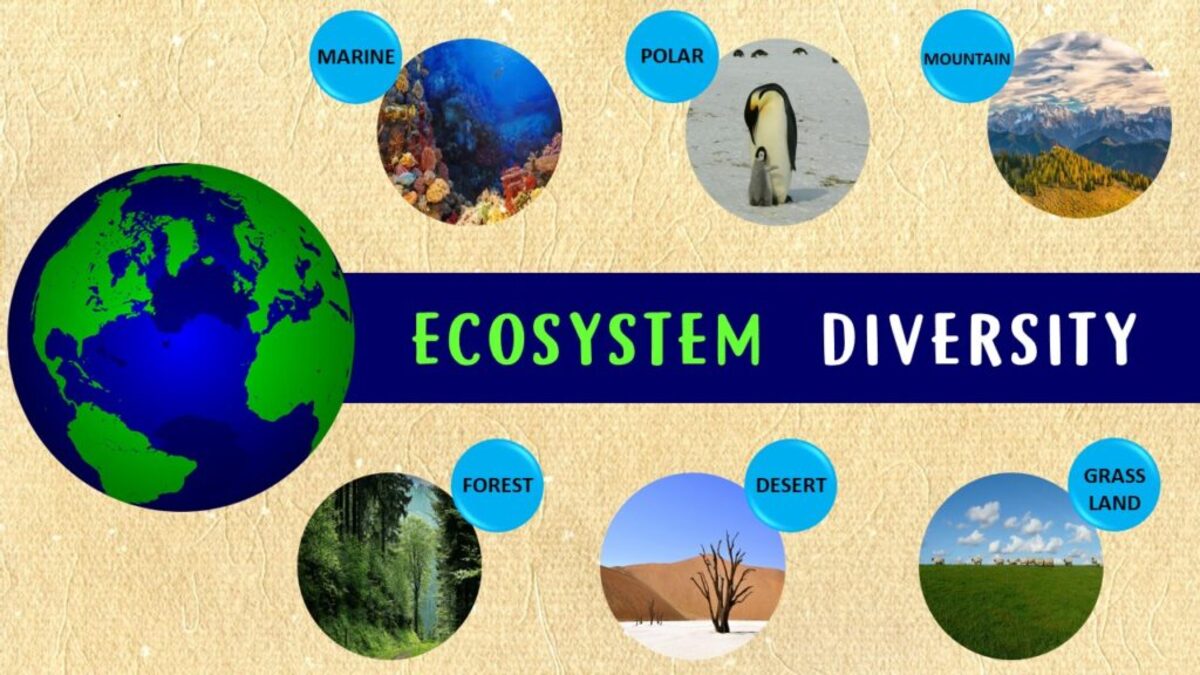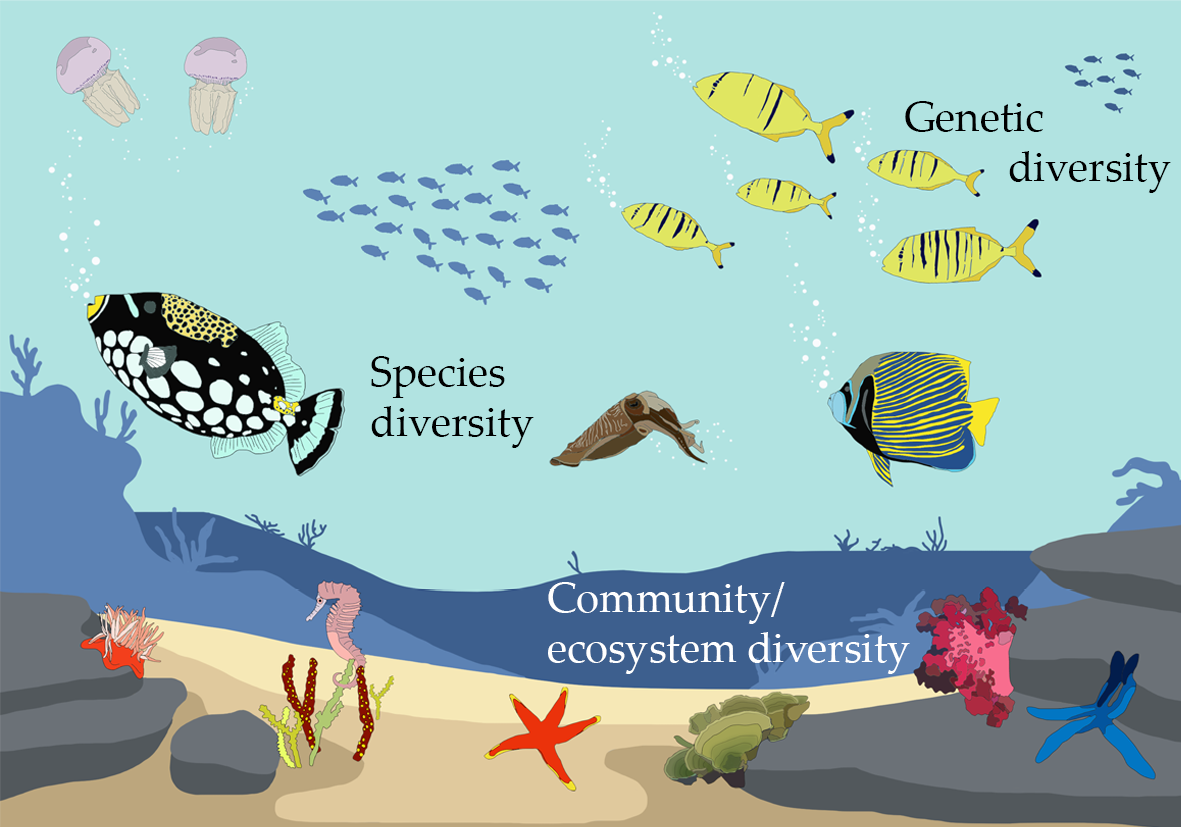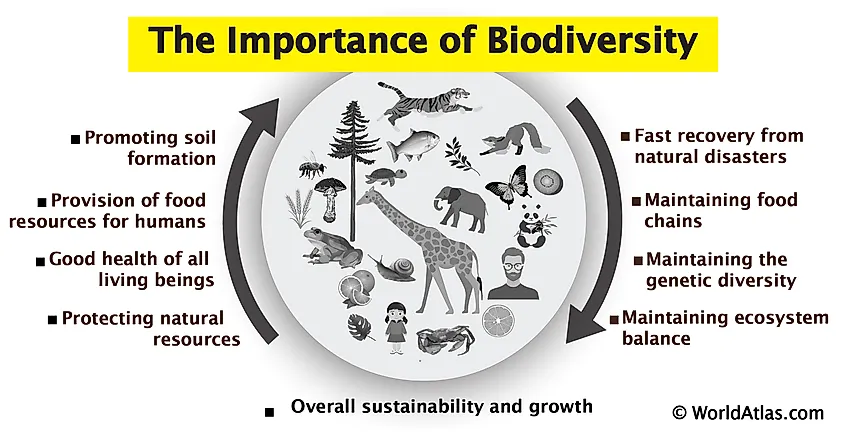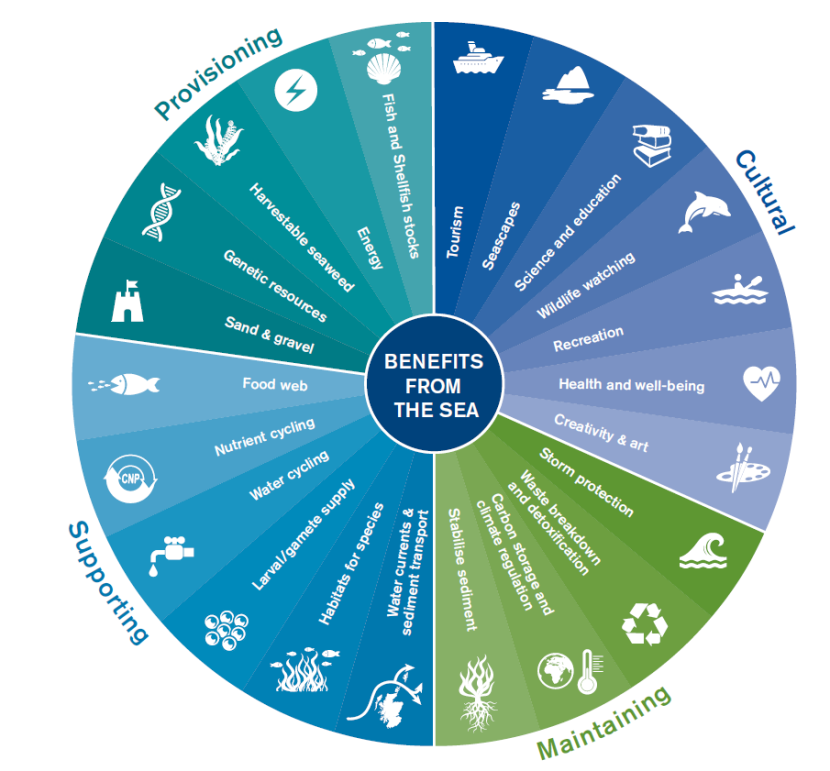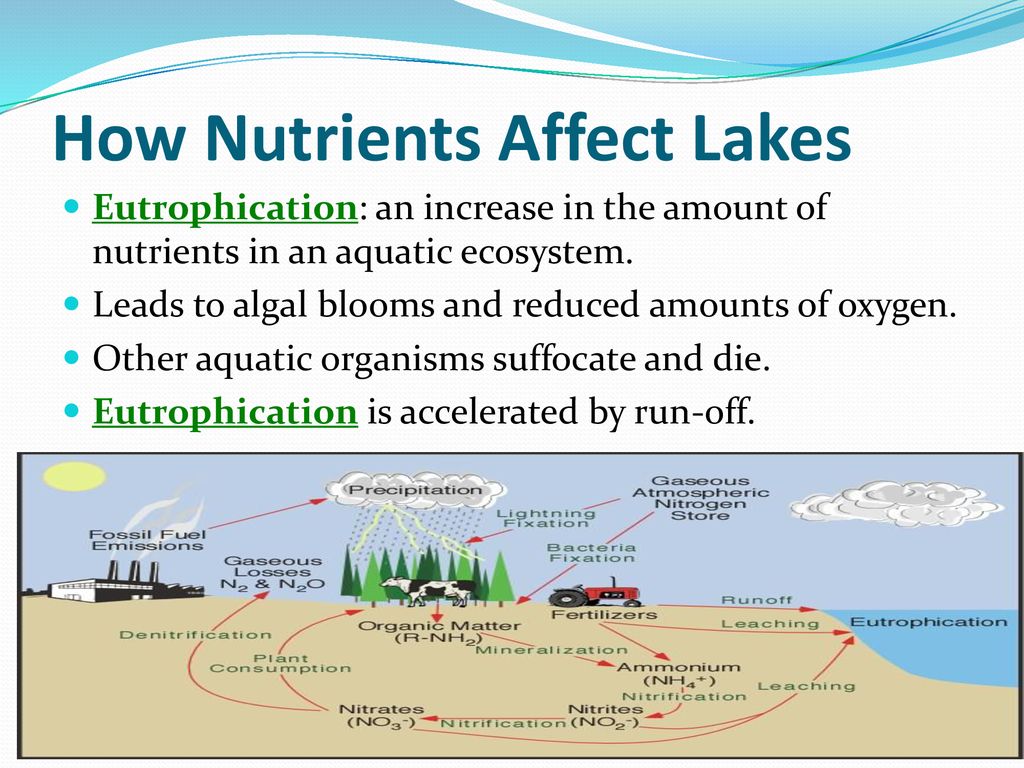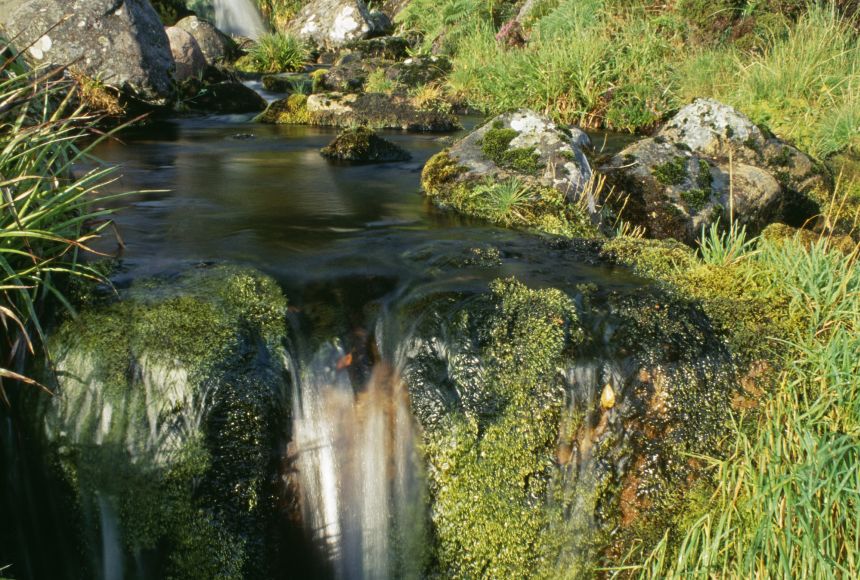Topic biodiversity ecosystem function: Explore how biodiversity underpins ecosystem function, offering insights into nature"s intricate web of life and its crucial role in sustaining our planet"s health and resilience.
Table of Content
- Can biodiversity loss impact ecosystem function?
- Understanding the Relationship Between Biodiversity and Ecosystem Function
- Key Roles of Biodiversity in Ecosystem Services and Stability
- Impact of Biodiversity Loss on Ecosystem Functioning
- Functional Traits and Ecosystem Services: The Importance of Diversity
- Integrating Biodiversity, Ecosystem Function, and Services in Conservation
- Global Change and Biodiversity: Challenges and Opportunities
- YOUTUBE: Biodiversity Ecosystems and Ecological Networks
- Experimental Insights into Biodiversity–Ecosystem Functioning
- Scaling Up Biodiversity-Ecosystem Function Research for Global Solutions
- Biodiversity and Ecosystem Multifunctionality: A Complex Relationship
- Future Directions in Biodiversity–Ecosystem Function Research
Can biodiversity loss impact ecosystem function?
Yes, biodiversity loss can have significant impacts on ecosystem function. Here is a detailed explanation:
- Species diversity: A higher species diversity is associated with increased ecosystem productivity. Different species perform various ecological functions, such as nutrient cycling, pollination, and pest control. When biodiversity declines, these essential functions may be compromised.
- Stability: Biodiverse ecosystems tend to be more resilient and better able to withstand disturbances. Species redundancy within a diverse ecosystem ensures that if one species is negatively affected by a disturbance, other species can compensate and maintain the ecosystem\'s overall stability. Reduced biodiversity can make ecosystems more vulnerable to environmental changes and less likely to recover from disturbances.
- Invasibility: High biodiversity can act as a natural defense against invasive species. In diverse ecosystems, there is often strong competition among species, making it challenging for non-native species to establish themselves. When biodiversity decreases, the chances of invasive species successfully colonizing and disrupting the ecosystem increase.
- Nutrient dynamics: Biodiversity plays a crucial role in nutrient cycling. Different species have varying nutrient requirements, and their interactions contribute to the efficient recycling and distribution of nutrients within ecosystems. With fewer species, nutrient cycling can become less efficient, affecting the overall health and productivity of the ecosystem.
In summary, maintaining biodiversity is essential for sustaining ecosystem function and the services they provide. Loss of biodiversity can lead to reduced productivity, instability, increased invasibility, and disruption of nutrient dynamics within ecosystems.
READ MORE:
Understanding the Relationship Between Biodiversity and Ecosystem Function
Biodiversity, the variety of life in all its forms, plays a critical role in maintaining the balance and health of ecosystems. This diversity, encompassing genes, species, and ecosystems, contributes significantly to the resilience and functionality of natural habitats.
- Species Interactions: The complex interactions among species, including predation, competition, and symbiosis, contribute to ecosystem stability and productivity.
- Genetic Diversity: Variability within species ensures resilience to environmental changes and stresses, aiding in ecosystem adaptation.
- Ecosystem Services: Biodiversity supports a range of ecosystem services vital for human well-being, including air and water purification, pollination, and climate regulation.
- Productivity and Stability: Diverse ecosystems tend to be more productive and better at withstanding and recovering from environmental pressures and disturbances.
Research shows that higher biodiversity leads to increased ecosystem function, such as nutrient cycling, soil formation, and water filtration. These processes are essential for supporting life on Earth and offer critical insights into conservation strategies aimed at preserving biodiversity and ensuring ecosystem health and resilience against global change.

Key Roles of Biodiversity in Ecosystem Services and Stability
Biodiversity is fundamental in supporting ecosystem services that are crucial for human survival and the health of our planet. These services include provisioning, regulating, cultural, and supporting services, each playing a unique role in ecosystem stability and resilience.
- Provisioning Services: Biodiversity contributes to the production of food, fresh water, wood, fiber, and genetic resources, directly supporting human nutrition and economic activities.
- Regulating Services: It plays a crucial role in regulating climate, floods, disease, wastes, and water quality. For example, forests regulate water cycles and air quality, while wetlands filter pollutants from water.
- Cultural Services: Biodiversity enriches cultures, spiritual well-being, and recreational activities. Diverse landscapes and wildlife are foundations for tourism, education, and cultural heritage.
- Supporting Services: These are necessary for the production of all other ecosystem services, such as soil formation, photosynthesis, and nutrient cycling, underpinning the health of the planet and its inhabitants.
This intricate web of services showcases how biodiversity contributes to the stability and resilience of ecosystems, helping them respond to environmental changes and stresses. Protecting biodiversity is therefore essential for maintaining ecosystem balance and ensuring sustainable benefits for future generations.
Impact of Biodiversity Loss on Ecosystem Functioning
The decline in biodiversity is a growing concern, significantly impacting ecosystem functioning and services. Biodiversity loss affects the resilience of ecosystems, making them more vulnerable to disturbances and reducing their ability to provide essential services to humans and wildlife alike.
- Decreased Resilience: Ecosystems with reduced biodiversity are less able to recover from environmental stresses and disturbances, such as droughts, floods, and human-induced changes.
- Reduced Ecosystem Services: The decline in species diversity can lead to diminished ecosystem services, including pollination, water purification, and carbon sequestration, affecting food security and human health.
- Altered Nutrient Cycling: Biodiversity loss can disrupt the balance of nutrient cycling, leading to soil degradation, reduced agricultural productivity, and water quality issues.
- Increased Vulnerability to Invasive Species: Less diverse ecosystems are more susceptible to invasions by non-native species, which can further reduce native biodiversity and alter ecosystem function.
Understanding the impact of biodiversity loss is crucial for developing effective conservation and restoration strategies aimed at preserving ecosystem functions and services. By protecting and enhancing biodiversity, we can ensure the stability and sustainability of ecosystems for future generations.
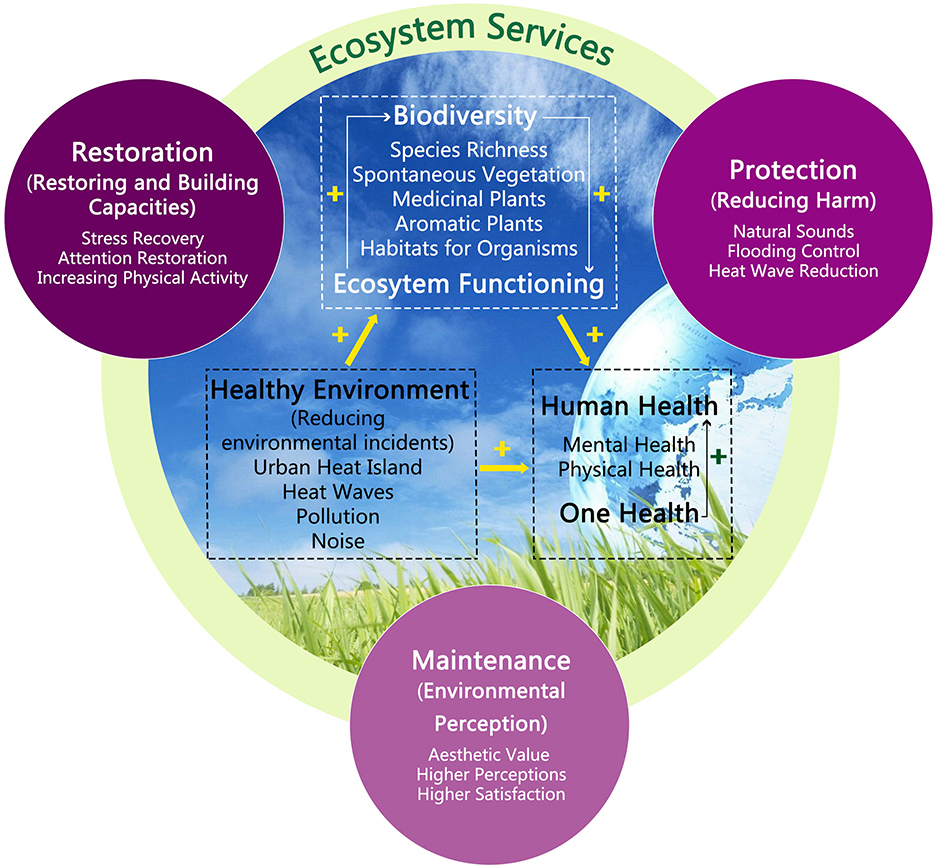
Functional Traits and Ecosystem Services: The Importance of Diversity
The diversity of functional traits within an ecosystem is a critical determinant of its overall health and the breadth of services it can provide. Functional traits refer to the characteristics of organisms that influence their performance and interactions within an ecosystem, ultimately affecting ecosystem processes and services.
- Enhanced Pollination and Seed Dispersal: Diversity in plant species and their pollinators enhances pollination efficiency and seed dispersal, contributing to ecosystem regeneration and resilience.
- Improved Soil Health: Varied root systems and microbial communities contribute to soil structure, fertility, and nutrient cycling, supporting plant growth and reducing erosion.
- Water Regulation and Purification: The presence of diverse plant and microbial communities improves water filtration and storage, reducing pollution and mitigating flood risks.
- Carbon Sequestration: A range of plant species with different growth rates and lifespans enhances an ecosystem’s capacity to capture and store carbon, playing a crucial role in climate regulation.
This diversity in functional traits is essential for maintaining ecosystem services, such as food production, climate regulation, and disease control. By preserving and restoring biodiversity, we can ensure ecosystems continue to function effectively, providing essential services for all forms of life on Earth.
Integrating Biodiversity, Ecosystem Function, and Services in Conservation
Integrating biodiversity, ecosystem function, and services into conservation strategies is essential for sustainable management and the preservation of our planet’s natural heritage. This holistic approach ensures the maintenance of ecosystem health, resilience, and the multitude of services they provide to humanity.
- Landscape-Scale Conservation: Conservation efforts must consider entire landscapes and ecosystems rather than focusing solely on individual species. This approach helps maintain ecological processes and connectivity.
- Ecosystem-Based Management: Managing ecosystems based on their natural functions and processes promotes resilience and the ability to adapt to changing conditions, benefiting both biodiversity and human communities.
- Restoration Ecology: Restoring degraded habitats and ecosystems can replenish lost biodiversity and ecosystem functions, enhancing resilience and the provision of ecosystem services.
- Protected Areas and Buffer Zones: Establishing and effectively managing protected areas, alongside buffer zones, can safeguard critical habitats, species, and ecosystem functions.
- Community Involvement and Traditional Knowledge: Engaging local communities and utilizing traditional ecological knowledge in conservation planning and implementation ensures sustainable outcomes and conservation success.
By acknowledging the interconnectedness of biodiversity, ecosystem functions, and services, conservation efforts can be more effective in addressing the challenges of biodiversity loss, climate change, and human well-being. This integrated approach is crucial for the sustainable management of natural resources and the future of biodiversity conservation.

Global Change and Biodiversity: Challenges and Opportunities
Global environmental changes pose significant challenges to biodiversity and ecosystem function, yet they also present unique opportunities for innovation and adaptation in conservation practices. Understanding these dynamics is crucial for effective biodiversity management and ecosystem preservation.
- Climate Change Impacts: Rising temperatures and altered precipitation patterns affect species distributions and ecosystem functions, necessitating adaptive conservation strategies to ensure species survival and ecosystem resilience.
- Habitat Loss and Fragmentation: Human activities continue to convert natural habitats for agriculture and urban development, highlighting the need for integrated land-use planning and habitat connectivity conservation.
- Invasive Species: The spread of non-native species due to global trade and climate change threatens native biodiversity and ecosystem stability, calling for rigorous biosecurity measures and public awareness.
- Pollution: Pollution from plastics, chemicals, and other waste products impacts ecosystems and species health, emphasizing the importance of pollution control and sustainable consumption practices.
- Opportunities for Conservation Technology: Advances in technology offer new tools for monitoring biodiversity, restoring ecosystems, and engaging the public in conservation efforts.
- Global Collaboration for Biodiversity: International cooperation and agreements are vital for addressing transboundary conservation challenges and leveraging global resources for biodiversity preservation.
While global change presents significant challenges, it also encourages innovative approaches to conservation that can enhance biodiversity and ecosystem resilience. By seizing these opportunities, we can develop effective strategies to mitigate impacts and safeguard our planet"s biological diversity for future generations.
Biodiversity Ecosystems and Ecological Networks
\"Discover how networks connect us all and make the world a smaller, more connected place. Watch this video to learn about the power and importance of networks in our everyday lives.\"
GS0E Biodiversity and Ecosystem Function
\"Curious about GS0E? This video will take you on an exciting journey into the fascinating world of GS0E, unraveling its mysteries and showing you why it\'s a must-watch for all tech enthusiasts.\"
Experimental Insights into Biodiversity–Ecosystem Functioning
Experimental research has been pivotal in understanding the complex relationships between biodiversity and ecosystem functioning. These studies provide concrete evidence on how diversity influences ecosystem processes and services, guiding conservation and management practices.
- Species Richness and Productivity: Experiments have shown that ecosystems with higher species richness tend to have increased productivity and efficiency in resource use, highlighting the value of conserving diverse species.
- Resilience to Disturbances: Research indicates that diverse ecosystems are more resilient to environmental disturbances, such as droughts and pest invasions, due to the presence of a variety of functional traits among species.
- Nutrient Cycling and Water Quality: Studies demonstrate that biodiversity enhances nutrient cycling and water quality, with diverse microbial and plant communities playing critical roles in these processes.
- Pollination and Pest Control Services: Experiments focusing on pollinator and predator diversity have revealed that a higher diversity of these organisms improves pollination success and natural pest control, benefiting agricultural productivity and ecosystem health.
- Carbon Storage and Climate Regulation: Experimental insights show that biodiversity is crucial for carbon sequestration, contributing to climate regulation and mitigation efforts.
These experimental insights underscore the importance of maintaining biodiversity to ensure the stability and functionality of ecosystems. They also highlight the need for evidence-based policies and practices in biodiversity conservation and ecosystem management.

Scaling Up Biodiversity-Ecosystem Function Research for Global Solutions
Expanding biodiversity-ecosystem function research on a global scale is crucial for addressing the pressing environmental challenges of our time. This requires a concerted effort to integrate findings from local studies into broader, globally applicable solutions for conservation and sustainable management.
- Global Data Networks: Establishing comprehensive global databases on biodiversity and ecosystem functions can facilitate the sharing of knowledge and enable large-scale analyses and modeling.
- Interdisciplinary Collaboration: Combining expertise from ecology, conservation biology, geography, and socio-economics can enhance our understanding of biodiversity-ecosystem function relationships and their relevance to human well-being.
- Long-Term Monitoring Programs: Implementing long-term ecological monitoring across different biomes and climate zones is essential for tracking changes in biodiversity and ecosystem services over time.
- Technology and Innovation: Leveraging technological advances, such as remote sensing, bioinformatics, and AI, can improve data collection, analysis, and the dissemination of research findings.
- Policy Integration: Translating scientific insights into actionable policies and conservation strategies is key to mitigating biodiversity loss and ecosystem degradation on a global scale.
- Public Engagement and Education: Raising awareness and educating the public about the importance of biodiversity and ecosystem functions can foster a more informed and engaged global community committed to conservation efforts.
By scaling up biodiversity-ecosystem function research and fostering global collaboration, we can develop robust strategies to preserve biodiversity, ensure ecosystem resilience, and sustain the planetary systems upon which all life depends.
Biodiversity and Ecosystem Multifunctionality: A Complex Relationship
The relationship between biodiversity and ecosystem multifunctionality is intricate and vital for understanding how ecosystems operate and sustain various functions simultaneously. Biodiversity influences the capacity of ecosystems to provide multiple services, underpinning the resilience and stability of natural systems.
- Diverse Functional Roles: Different species contribute unique functions within ecosystems, such as nutrient cycling, pollination, and decomposition, which collectively enhance ecosystem multifunctionality.
- Redundancy and Resilience: Biodiversity ensures that multiple species can fulfill similar roles, providing a buffer against the loss of any single species and maintaining ecosystem processes in the face of disturbances.
- Synergistic Interactions: Interactions among species can lead to synergistic effects, where the combined effect of species interactions is greater than the sum of their individual effects, enhancing ecosystem performance.
- Trade-offs in Ecosystem Services: Managing biodiversity for ecosystem multifunctionality often involves understanding and navigating trade-offs between different ecosystem services, requiring holistic conservation strategies.
This complex relationship highlights the importance of conserving biodiversity not only for its intrinsic value but also for its crucial role in supporting multiple ecosystem functions and services. Understanding and managing these relationships are essential for sustainable ecosystem management and conservation efforts.
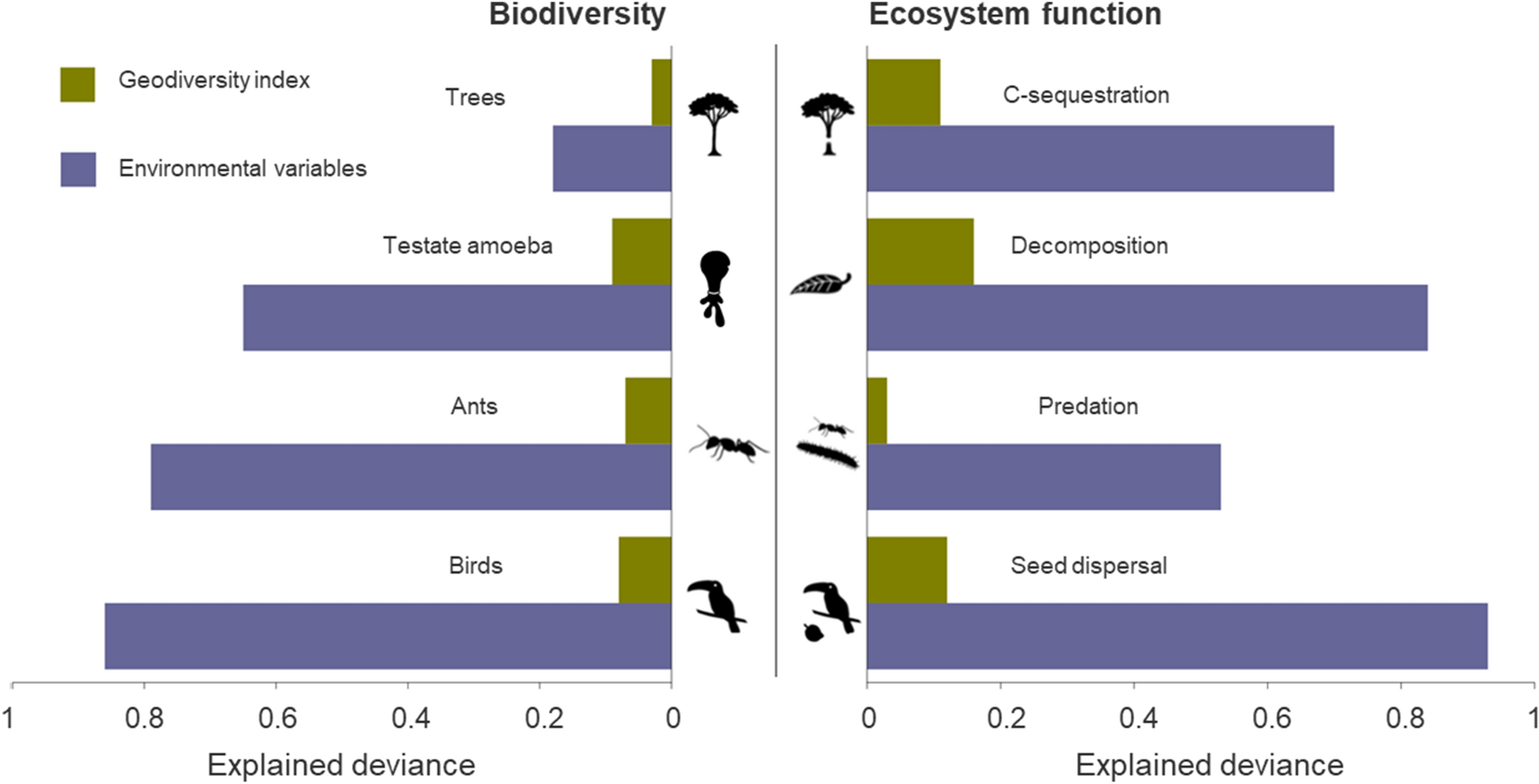
READ MORE:
Future Directions in Biodiversity–Ecosystem Function Research
As we advance our understanding of biodiversity-ecosystem function relationships, future research directions are increasingly focusing on integrating multidisciplinary approaches, addressing global environmental challenges, and informing sustainable management practices.
- Incorporating Climate Change Impacts: Understanding how climate change affects biodiversity and ecosystem functions is crucial for developing adaptive management strategies to mitigate adverse impacts.
- Enhancing Spatial and Temporal Scales: Expanding research to encompass broader geographical areas and longer time frames will provide insights into ecosystem dynamics and resilience under varying conditions.
- Leveraging Technological Advances: Utilizing cutting-edge technologies, such as drones, satellite imagery, and machine learning, can significantly improve data collection, analysis, and modeling of biodiversity and ecosystem processes.
- Integrating Human Dimensions: Considering the socio-economic factors and human interactions with ecosystems is essential for holistic approaches to biodiversity conservation and ecosystem management.
- Strengthening Policy and Management Links: Bridging the gap between scientific research and policy-making will ensure that findings are effectively translated into practical conservation strategies and sustainable use of ecosystem services.
- Fostering Global Collaboration: International cooperation and knowledge exchange are key to addressing the global nature of biodiversity and ecosystem challenges, promoting unified efforts towards conservation and sustainability.
These future directions underscore the need for innovative, interdisciplinary research approaches that can adapt to changing environmental conditions and support the conservation and sustainable management of biodiversity and ecosystem functions worldwide.
Embracing the complexity of biodiversity and its essential role in ecosystem functioning paves the way for sustainable futures, highlighting the urgent need for conservation efforts that protect our planet"s intricate web of life.
